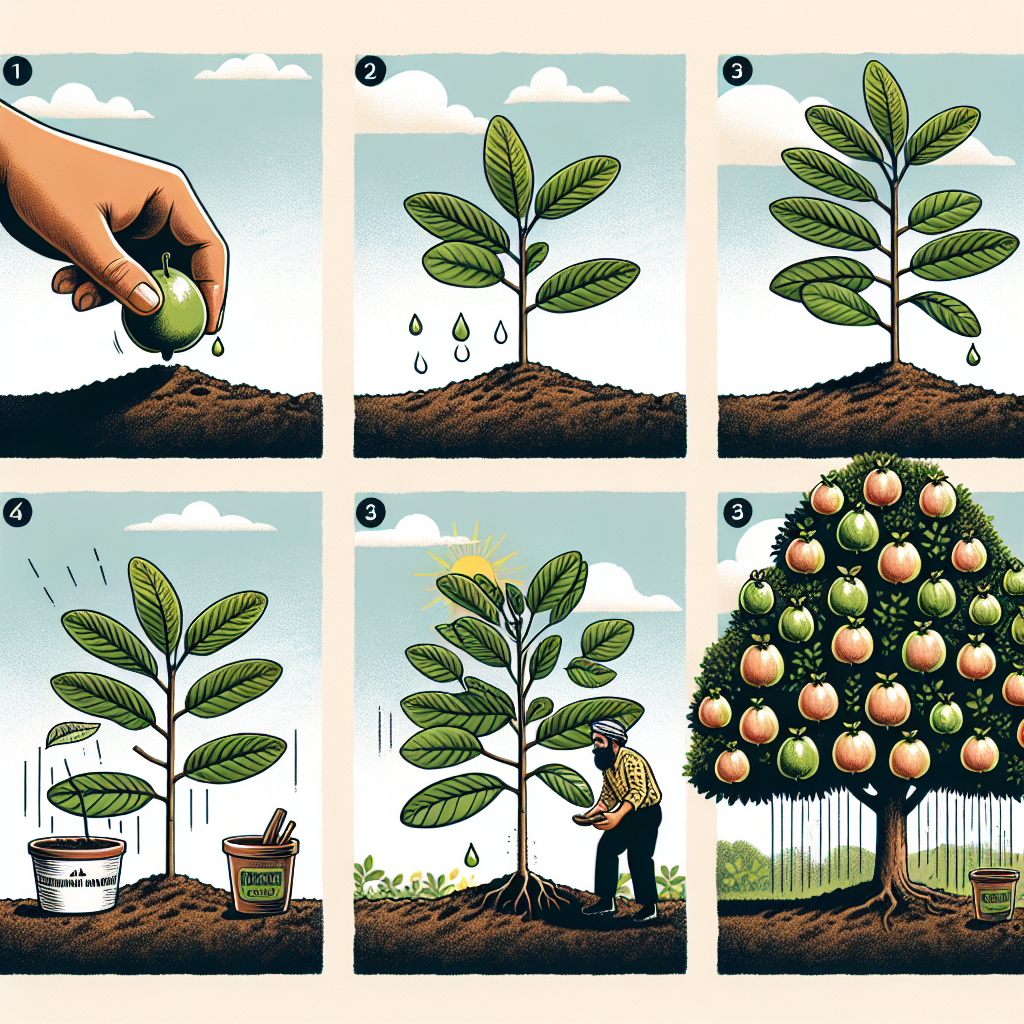
How to grow guava tree faster
Understanding Guava Trees: A Guide to Fast Growth
Guava trees are not only popular for their delicious fruit but also appreciated for their vibrant foliage and aromatic flowers. If you’ve ever wondered how to grow guava tree faster, you're in the right place! In this comprehensive guide, we will explore the essential tips and practices that can help you cultivate a healthy, flourishing guava tree in less time.
The Benefits of Growing Guava Trees
Before delving into the specifics of fast-growing techniques, let’s look at a few advantages of growing guava trees:
- Nutritious Fruit: Guavas are packed with vitamins A and C, dietary fiber, and antioxidants.
- Versatile Uses: The fruit can be consumed fresh, made into juices, jams, and jellies, or used in desserts.
- Aromatic Flowers: The blossoms attract pollinators such as bees, enhancing biodiversity in your garden.
- Low Maintenance: Guava trees require relatively low care once established, making them suitable for novice gardeners.
Choosing the Right Guava Varieties
When considering how to grow guava tree faster, the starting point is selecting a suitable variety. There are several species of guava, including:
- Common Guava (Psidium guajava): This variety has a sweet and fragrant fruit.
- Strawberry Guava (Psidium cattleianum): Known for its small fruit and robust flavor.
- Yellow Guava (Psidium guajava var. chiloense): Offers a unique sweet and tangy flavor.
Each type has its growing requirements, so it’s essential to choose the one that ticks all your boxes in climate and taste preference.
Essential Conditions for Growing Guava Trees
To optimize the growth rate of your guava tree, you must create the right environment for it to thrive. Here are key factors to consider:
Location and Sunlight
Guava trees thrive in sunny locations. Ideally, choose a spot that receives at least 6 to 8 hours of sunlight daily. Provide shelter from harsh winds to prevent damage to the young tree. A south-facing area is often the best choice in colder climates.
Soil Requirements
Guava trees prefer loamy, well-draining soils with a pH range of 5.5 to 7.0. To ensure the soil is conducive to growth:
- Conduct a soil test to determine its composition and pH.
- Enrich the soil with organic matter such as compost or well-rotted manure.
- Avoid waterlogged conditions, as this can lead to root rot.
Watering Practices
Proper watering is vital for the health and growth rate of your guava tree. Here’s how to manage it:
- Water the tree deeply once a week during dry spells.
- Avoid overwatering; ensure the topsoil dries out between waterings.
- Implement a drip irrigation system for consistent moisture levels.
Fertilization Techniques
Nourishing your guava tree with the right fertilizer can significantly impact its growth. You can promote faster growth by:
- Applying a balanced fertilizer high in nitrogen in the spring.
- Supplementing with potassium and phosphorus during the flowering stage.
- Using organic fertilizers such as fish emulsion or bone meal to enhance soil nutrition.
Grafting for Faster Results
Grafting is an advanced technique that can speed up the fruiting process of guava trees. This method involves attaching a branch (scion) from a mature guava tree to a rootstock. Benefits of grafting include:
- Accelerated fruit production compared to growing from seed.
- Greater resistance to diseases and pests.
- Enhanced fruit quality and variety.
Steps for Grafting a Guava Tree
- Choose a healthy, disease-free guava tree as your rootstock.
- Cut a scion from a mature tree that has desirable fruit characteristics.
- Make a clean cut on the rootstock and insert the scion, ensuring good contact between the two tissues.
- Wrap the grafted area with grafting tape to secure it.
- Water the tree regularly while it establishes itself.
Pest and Disease Management
To ensure that your guava tree grows faster, it’s crucial to keep it healthy and free from pests and diseases. Some common issues include:
- Guava Fruit Fly: This pest can damage fruit, so use traps or natural predators.
- Scale Insects: They suck sap from the tree, weakening it. Apply neem oil or insecticidal soap.
- Powdery Mildew: A fungal issue that can affect leaves; use organic fungicides to manage it.
Regularly inspect your guava tree, and practice integrated pest management (IPM) to keep these challenges in check.
Conclusion: Cultivating Success
Growing a guava tree can be a fulfilling venture, especially when considering the flavor of fresh fruit and the beauty of the tree itself. While we’ve only briefly touched upon how to grow guava tree faster, implementing the mentioned techniques will support your growth efforts. Remember to choose the right variety, maintain optimal growing conditions, and manage pests effectively for a rewarding gardening experience.
“With proper care and attention, your guava tree can transform from a humble sapling into a fruitful tree that offers delicious guavas for years to come.”
Happy gardening, and may your guava trees flourish and thrive!
By Guest, Published on August 16th, 2024